
Turf Wars: The Battle for the Perfect Lawn
Submitted: Aug. 21, 2023, 3:02 p.m.
When it comes to turf, there is no one-size-fits-all answer. Some people swear by Kentucky bluegrass (Poa pratensis), while others prefer fescue. In our hot, dry climate, Kentucky bluegrass is not the best choice for conserving water. Turf-type tall fescue (Festuca arundinacea) is a more drought-tolerant grass that is well-suited for the climate in northern Utah. We use selections of turf-type tall fescue in our Amphitheatre and other lawn areas at Red Butte Garden.
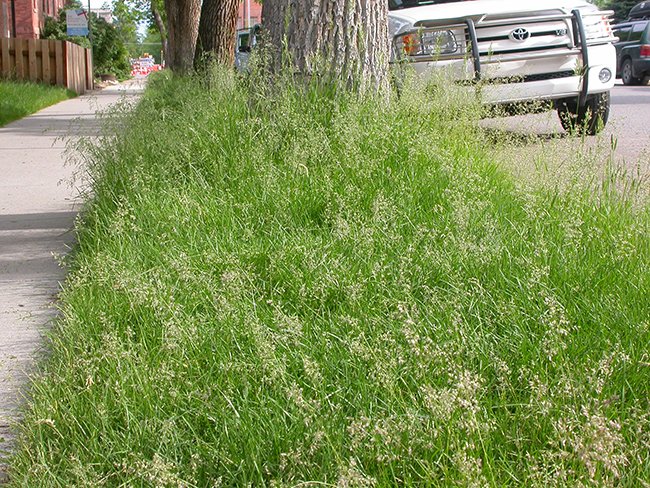
Kentucky Bluegrass (Poa pratensis)
Kentucky bluegrass is a tufted perennial grass that spreads by underground rhizomes. It is a popular choice for lawns, golf courses, and parks because of its deep-green, finely textured leaves and its ability to form a dense, uniform turf. Because it spreads by rhizomes, it is able to regrow and fill in areas worn down by heavier use. If un-mowed, it can grow up to 24 inches tall.
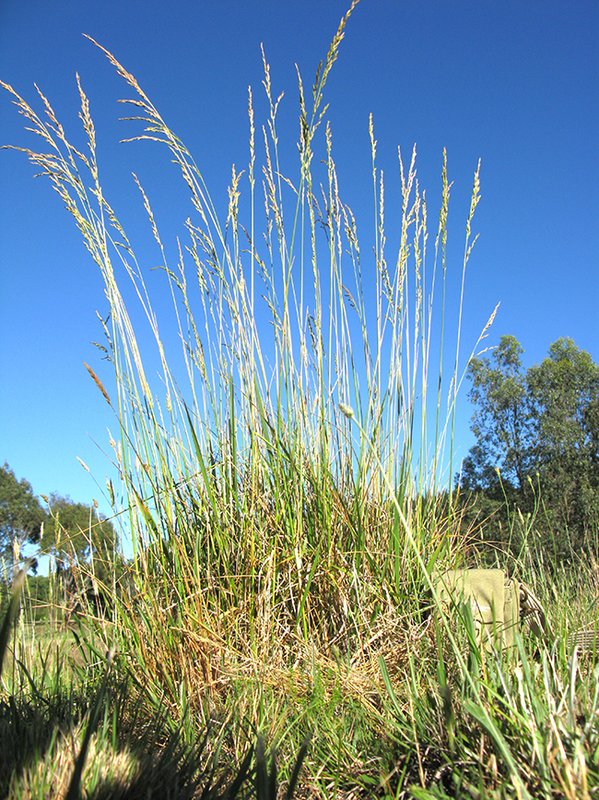
Tall Fescue (Festuca arundinacea)
Tall fescue, also referred to as a turf-type tall fescue, is a long-lived, drought- and wear-tolerant perennial bunch grass that is often used as livestock forage, as an ornamental grass, and for turf. It produces clumps of wide, prominently-veined leaves that can grow up to 36 inches tall.
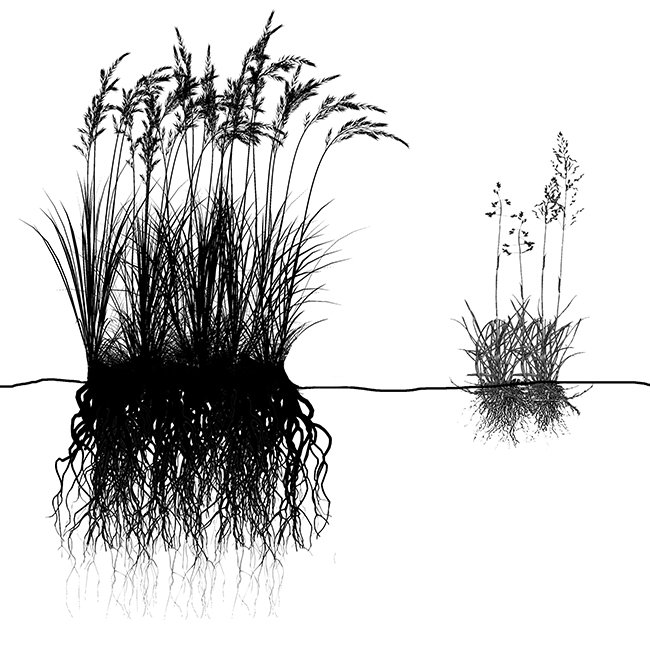
Left: Turf-type Tall Fescue (Festuca arundinacea) Right: Kentucky Bluegrass (Poa pratensis)
Heat and Drought Tolerance
Turf-type tall fescue is a clump-forming perennial grass with deep roots. Its roots can reach up to 2-3 feet deep in the soil, which allows it to access water and nutrients that shallow-rooted grasses cannot. This makes it much more drought-tolerant than Kentucky bluegrass, which has shallow roots.
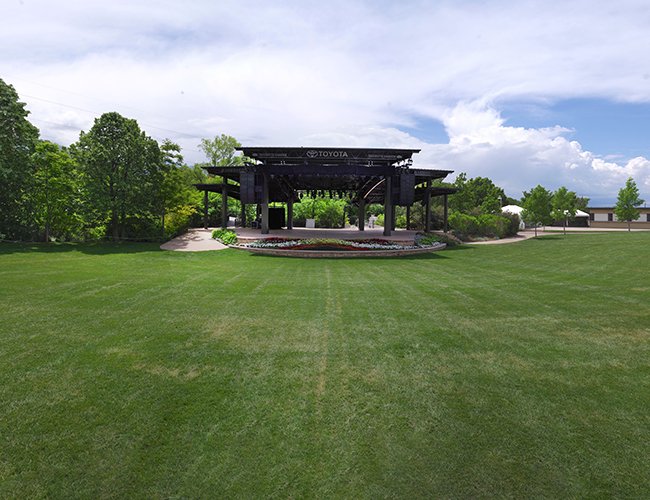
Maintenance Requirements
Turf-type tall fescue is a low-maintenance grass that requires less mowing, watering, and fertilizing than Kentucky bluegrass. Although fescue is wear-tolerant, it is not rhizomatous like Kentucky bluegrass so it doesn't naturally spread to fill in areas worn down by heavy use. This is why it is recommended to overseed an existing fescue lawn every few years to keep it dense and healthy. Because our Amphitheatre lawn receives heavy use, it is overseeded annually.
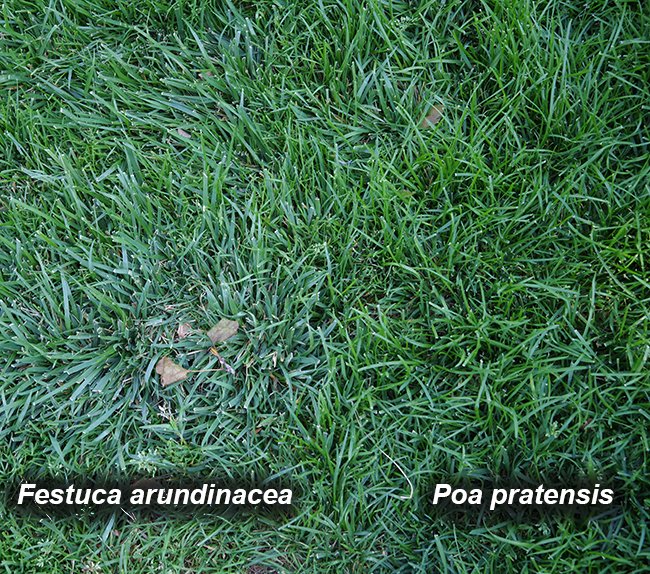
When planting your lawn, you can use a mix of tall fescue and Kentucky bluegrass seeds. Both grasses require the same amount of water when establishing, so this is a good option if you want to save time and effort. The tall fescue will sprout and form clusters, while the Kentucky bluegrass will fill in the spaces between. As the grasses becomes established, the fescue will send its roots deeper into the soil and require less water. As you begin to cut back on watering the Kentucky bluegrass will slowly retreat, leaving you with a lawn that is predominately fescue. Because fescue is a bunch grass, not rhizomatous, be sure to use the recommended rate of fescue seed, and periodically overseed your lawn in the fall to keep it looking dense and uniform, similar to that in our Amphitheatre.
So if you are looking for a grass that is heat and drought tolerant, shade and wear tolerant, disease resistant, and low-maintenance, then turf-type tall fescue is a superior choice. However, if you live in a cooler area that receives more rainfall and are looking for a grass with a finer texture that fills in thin areas on its own, then Kentucky bluegrass is a better choice. Ultimately, the best grass for your situation will depend on your specific needs, preferences, and climate.
Photos by Jason W. Baker, Matt Lavin, and Harry Rose
Photos by Matt Lavin and Harry Rose used under Creative Commons license Attribution-ShareAlike 2.0